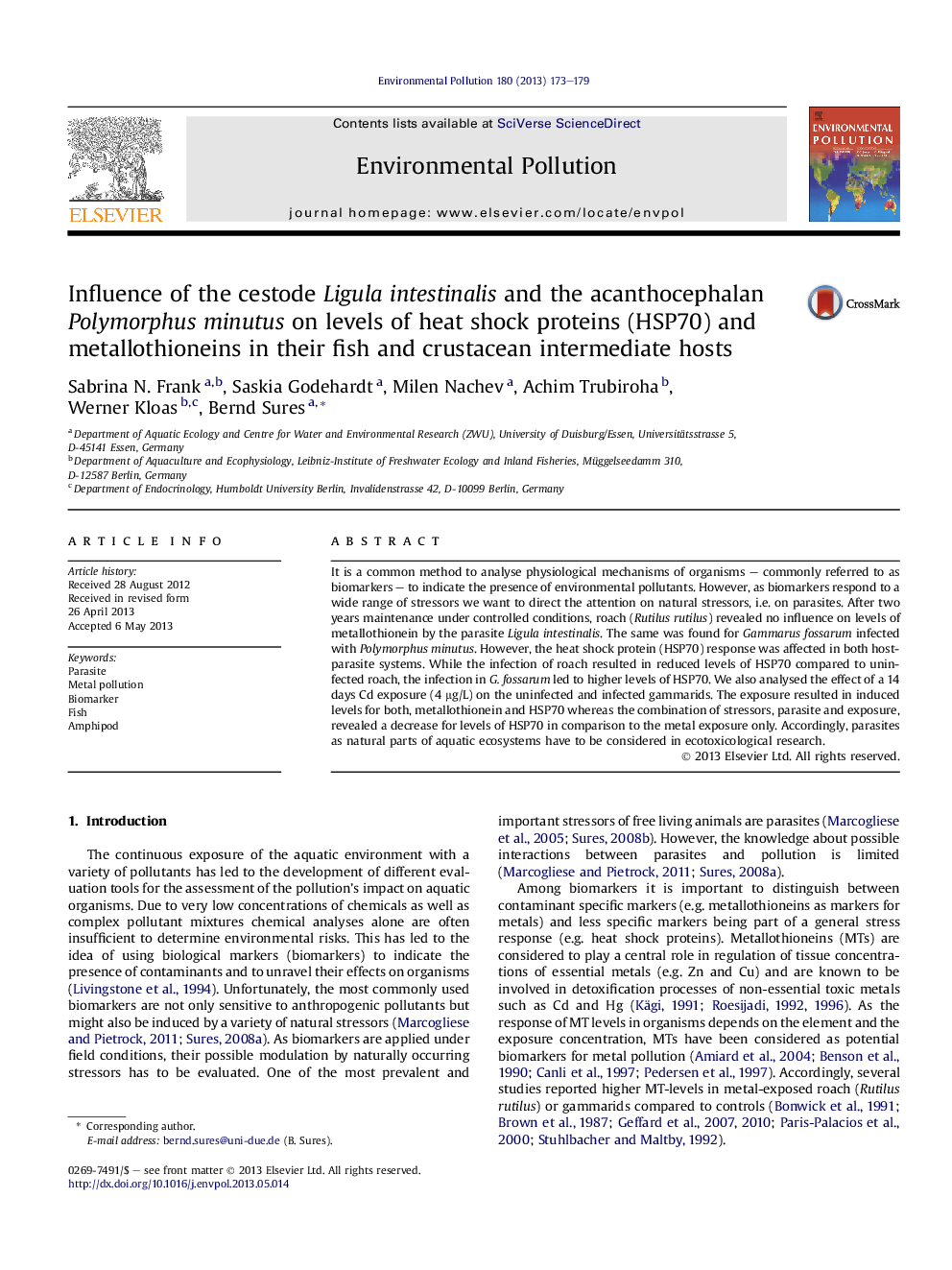| کد مقاله | کد نشریه | سال انتشار | مقاله انگلیسی | نسخه تمام متن |
|---|---|---|---|---|
| 6317721 | 1619192 | 2013 | 7 صفحه PDF | دانلود رایگان |
عنوان انگلیسی مقاله ISI
Influence of the cestode Ligula intestinalis and the acanthocephalan Polymorphus minutus on levels of heat shock proteins (HSP70) and metallothioneins in their fish and crustacean intermediate hosts
دانلود مقاله + سفارش ترجمه
دانلود مقاله ISI انگلیسی
رایگان برای ایرانیان
موضوعات مرتبط
علوم زیستی و بیوفناوری
علوم محیط زیست
شیمی زیست محیطی
پیش نمایش صفحه اول مقاله

چکیده انگلیسی
It is a common method to analyse physiological mechanisms of organisms - commonly referred to as biomarkers - to indicate the presence of environmental pollutants. However, as biomarkers respond to a wide range of stressors we want to direct the attention on natural stressors, i.e. on parasites. After two years maintenance under controlled conditions, roach (Rutilus rutilus) revealed no influence on levels of metallothionein by the parasite Ligula intestinalis. The same was found for Gammarus fossarum infected with Polymorphus minutus. However, the heat shock protein (HSP70) response was affected in both host-parasite systems. While the infection of roach resulted in reduced levels of HSP70 compared to uninfected roach, the infection in G. fossarum led to higher levels of HSP70. We also analysed the effect of a 14 days Cd exposure (4 μg/L) on the uninfected and infected gammarids. The exposure resulted in induced levels for both, metallothionein and HSP70 whereas the combination of stressors, parasite and exposure, revealed a decrease for levels of HSP70 in comparison to the metal exposure only. Accordingly, parasites as natural parts of aquatic ecosystems have to be considered in ecotoxicological research.
ناشر
Database: Elsevier - ScienceDirect (ساینس دایرکت)
Journal: Environmental Pollution - Volume 180, September 2013, Pages 173-179
Journal: Environmental Pollution - Volume 180, September 2013, Pages 173-179
نویسندگان
Sabrina N. Frank, Saskia Godehardt, Milen Nachev, Achim Trubiroha, Werner Kloas, Bernd Sures,